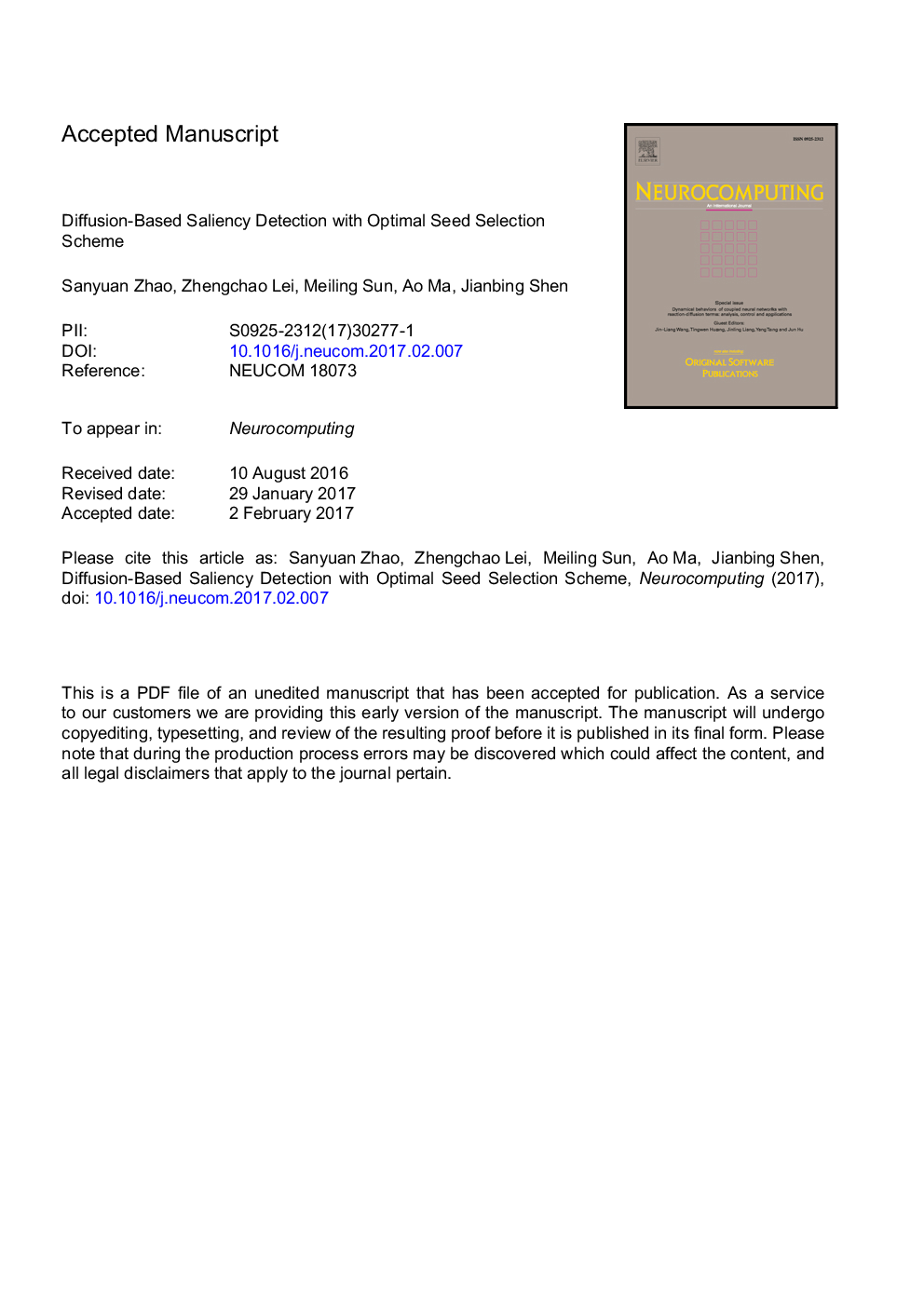| Article ID | Journal | Published Year | Pages | File Type |
|---|---|---|---|---|
| 4947694 | Neurocomputing | 2017 | 17 Pages |
Abstract
To detect salient regions in images, a widely accepted practice is to construct a graph on the image elements, and then assign a saliency value to each node in the graph according to its distance to a number of initial seeds. Two problems emerge in this procedure, i.e., generating the initial seeds and propagating the saliency values. In this work, a scheme for selecting the initial seeds is introduced. A linear model is learned to predict the confidence of assigning a superpixel to the foreground or to the background, and then an adaptive thresholding method is adopted to generate reliable foreground and background seeds, from which the saliency value is propagated in the diffusion procedure. The proposed approach is experimentally evaluated on several saliency detection datasets, and improved results are observed compared with a number of the state of the art methods.
Related Topics
Physical Sciences and Engineering
Computer Science
Artificial Intelligence
Authors
Sanyuan Zhao, Zhengchao Lei, Meiling Sun, Ao Ma, Jianbing Shen,
